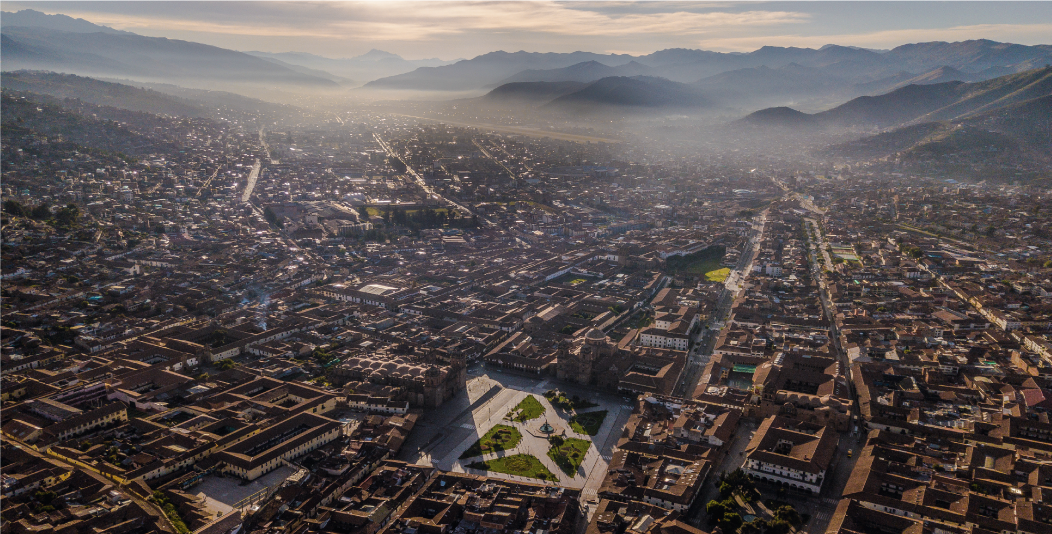That is actually a good question and to answer it properly we´ll consult certain sources. Raúl Porras Barrenechea said in this famous “Anthology of Cuzco”(Lima, 1961): “Neither archeology nor history, nor the material or human remains of the past, have managed to uproot nature, the secret of the origins of Cuzco. It still remains inscrutably to the domains of myth and legend. The precise historical circumstances when life started in “the great city of Cuzco”, the axis of the Andean land, the imperial city of southern prehistoric America, head of all the cities of the southern Viceroyalty under the Spanish regime and the eternal reflux of greatness, archaeological capital of our growing scientific and democratic Pan-Americanism, haven´t been determined yet.”1
This text from a distinguished Peruvian historian, suggests that Cusco has a much older history than the Viceroyalty, which inexorably ended up being the “head of the kingdoms of Peru.” However, we have to point out that another reason why the Spanish foundation is not accepted is because there are very deep-rooted myths about the Andean cosmovision. One of those myths is the one of Manco Cápac and Mama Ocllo, another one of the Ayar Brothers. Both represent two well-defined sectors of Cusco and their respective ancestry, the Hanan Qosqo and the Hurin Qosqo. At the same time, the “opposite myths” complement each other.
The first myth states that the capital of Cusco was founded by Manco Cápac and Mama Ocllo “where the gold scepter sank”. As children of the sun god, they left Lake Titicaca with the mission of finding a place where they could train men and women in agriculture and weaving, establishing the navel of the world. The second myth, narrates the story of four brothers and their respective companions, who left the windows of Pacareqtambo (a reenactment is currently performed there). Each brother assumed a different destiny until the pair formed by Ayar Manco and Mama Ocllo reached the navel formed by the rivers “Teqsicocha and Tullumayu”. They ascended to Qorikancha, to the rock where Ayar Auca became petrified after his wings sprouted indicating the point of foundation of Cusco. Through archaeological research we know that the city has a continuous settlement of more than 3 400 years. Pre-Inca tribes such as the Marcavalle, Huaura and Chanapata (1000 BC), were established along with the Tiahuanaco (first myth) and Wari (second myth) at about 750 AD. They left a notable influence on the Inca culture as proven by the archaeological remains in Piquillacta or Choquepuquio. The Spanish foundation of Cusco took place on March 23rd in 1534, despite the Incan uprising in 1536 which brought a long period of Inca resistance with it. After losing the city the Incas took refuge in Vilcabamba until 1572. Later, in 1781, with the execution of José Gabriel Condorcanqui Tupac Amaru II, the continental independence began. Forty years later, the Peruvian independence was declared in 1821. Even though it was a process that lasted decades, Cusco assumed its life as a Republic denying the Spanish presence. Let’s not forget that Peruvian indigenism was born here. In 1944, through the inspiration and work of artists and intellectuals, Inti Raymi was reinstated to honor the solar cult. In the 80s, Mayor Daniel Estrada passed a city ordinance that the celebrations would take place every year on June 24th, commemorating the Andean origin. In short, these are some of the answers to why the Spanish foundation is not celebrated in Cusco. _____
[1] Porras Barrenechea, Raúl. “Antología del Cuzco”. Pág. III. Librería Internacional del Perú, Lima 1961.
By Pavel Ugarte Cespesdes
(from Spanish: Magda Mailhamer)

